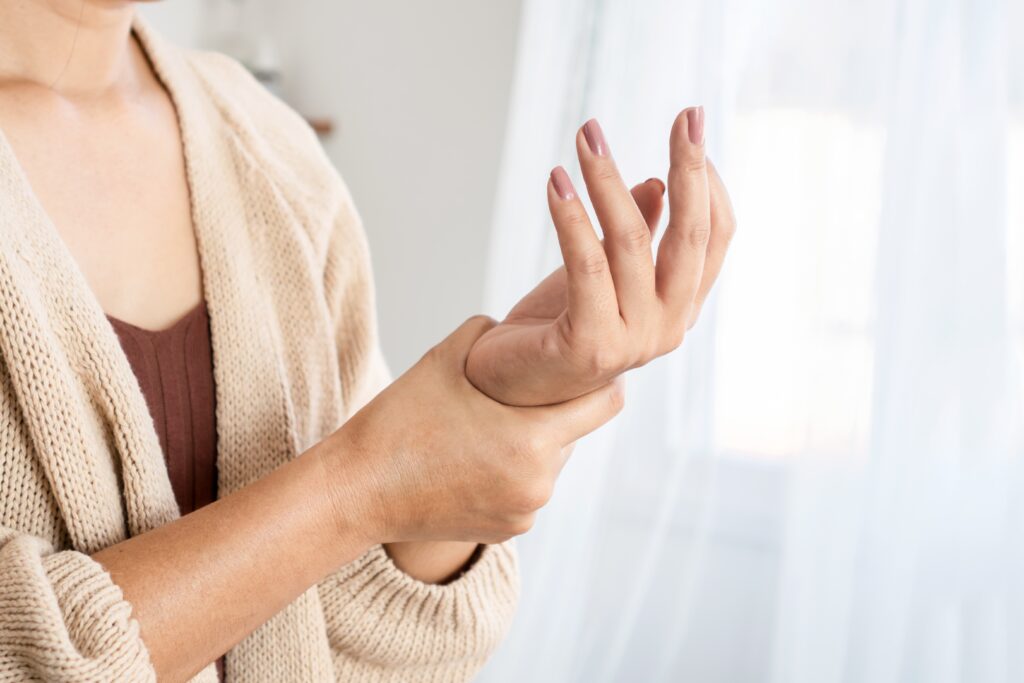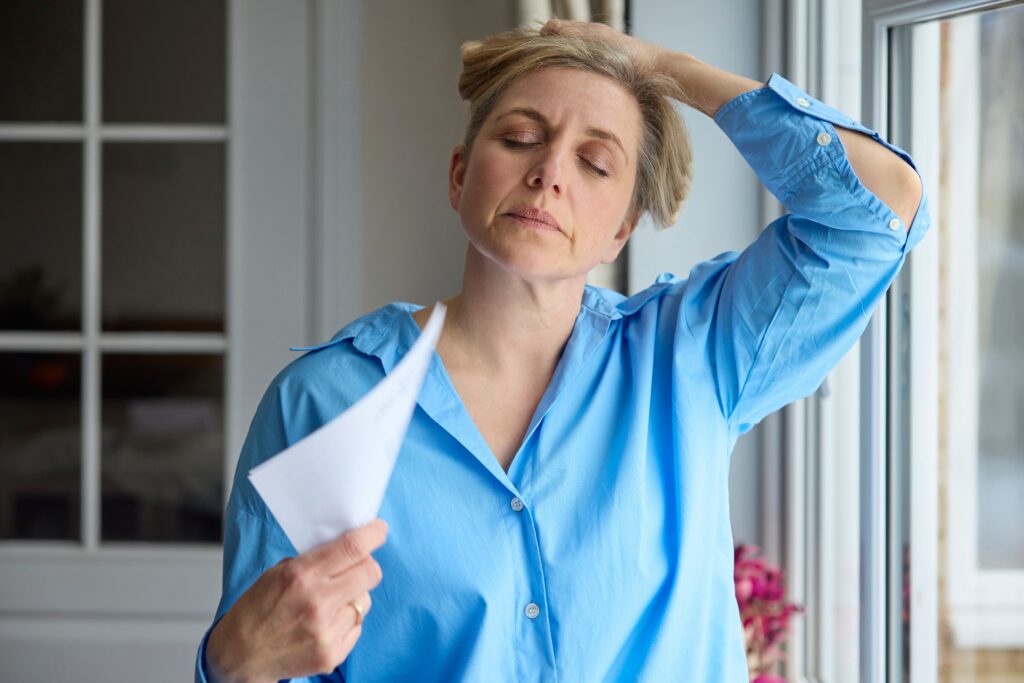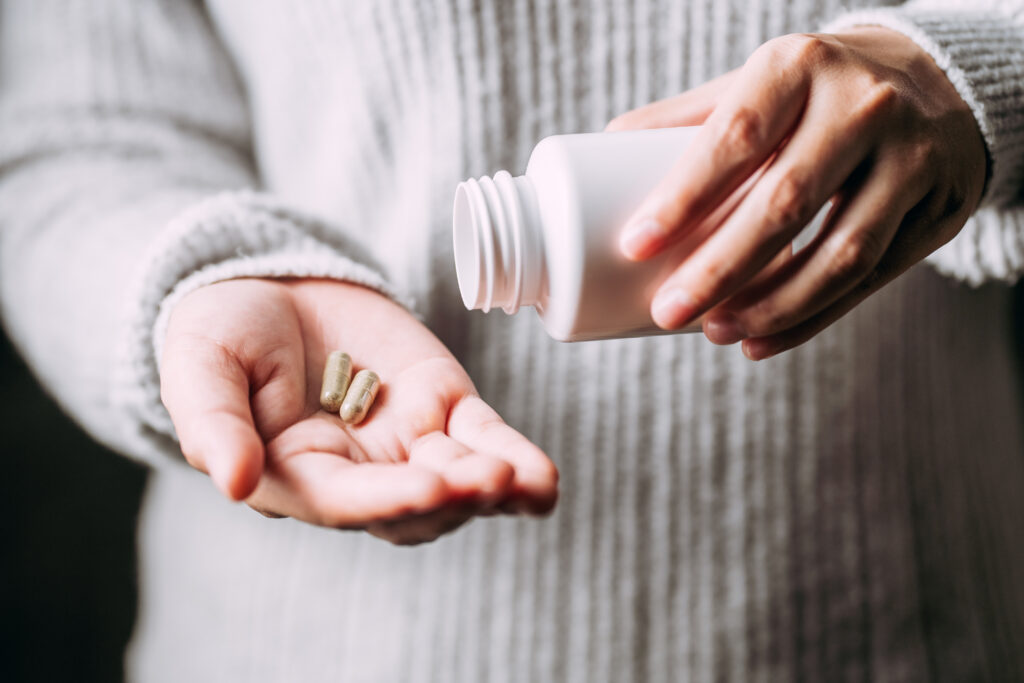October 19, 2023
Menopause and Joint Pain
Menopause is a significant milestone in every woman’s life, ushering in profound changes. While most of us brace ourselves for the expected hot flashes and occasional mood swings, joint pain often remains in the shadows.
 At Healthcare Associates of Texas, we’re committed to highlighting these lesser-discussed topics, ensuring you’re informed and empowered every step of the way.
At Healthcare Associates of Texas, we’re committed to highlighting these lesser-discussed topics, ensuring you’re informed and empowered every step of the way.
The Link Between Menopause and Joint Pain
It’s not uncommon for women to experience increased aches as they navigate the menopausal transition. While it’s tempting to attribute this to age or lifestyle, hormonal changes, particularly the decline in estrogen, play a significant role in this newfound discomfort.
Why Is Estrogen Important?
Estrogen, often touted as the female hormone, has functions far beyond reproductive health. For instance, estrogen keeps our joints fluid and moving smoothly. As estrogen levels dip, your joints become less cooperative, leading to stiffness. Estrogen also maintains bone density. With dwindling estrogen during menopause, bones can lose density, making them brittle and more prone to pain.
Causes of Menopausal Joint Pain
It is critical to identify the root problems of menopausal joint pain to develop effective solutions. Some may include:
- Hormonal Changes: Unsurprisingly, the primary factor of joint pain is a reduction in estrogen levels. As it deteriorates, joints lose some of their resistance to wear and stress.
- Weight Increase: Menopause is frequently associated with weight increase. Extra pounds put additional strain on the joints, causing pain.
- Less Muscle Mass: This is caused by less estrogen. Muscles are essential for joint support. With less muscle, you’ll also have less joint support and more discomfort.
Beyond Joint Pain: The Many Faces of Menopause
While joint pain is a significant concern, it’s just one piece of the puzzle. Menopause comes with an array of symptoms that can feel overwhelming. Here are a few examples of what you may experience:
- Hot flashes

- Night sweats
- Mood swings
- Continuous exhaustion
- Vaginal dryness
- Thinning or excessive hair loss
- Bloating and digestive changes
Other Conditions Mistaken for Menopausal Joint Pain
We all know that various health problems or simple injuries can cause joint pain. However, some of these issues have symptoms that feel a lot like menopausal aches and pains. They can easily be mistaken for one another, leading to confusion.
Distinguishing Between Osteoarthritis and Rheumatoid Arthritis
Both osteoarthritis and rheumatoid arthritis affect the joints, but their causes and progression are distinct. Osteoarthritis is a degenerative joint disease that causes the tissues in your joints to break down gradually. Joint pain is a common symptom of osteoarthritis.
Rheumatoid arthritis, on the other hand, is caused by an autoimmune disorder that incorrectly targets and damages joint tissues. Rheumatoid arthritis causes joint pain, stiffness, and swelling. It can occur in any joint but is most common in the knees, hands, and wrists.
Understanding Fibromyalgia
Fibromyalgia is a chronic disorder that causes widespread pain, exhaustion, and sleep difficulties. Its specific reasons are unknown; however, those who suffer from it experience increased sensitivity to pain. Because some of these symptoms are like those of menopause, it’s easy to confuse them.
While there is no treatment for fibromyalgia, medical practitioners can help to alleviate its symptoms. Physical activities, cognitive-behavioral therapies, and prescribed medicines are common therapy techniques.
Alleviating Menopausal Joint Pain: Your Roadmap to Relief
Navigating the twists and turns of menopause doesn’t have to come with the added burden of joint pain. Implementing a few strategic changes in your daily routine can make a significant difference. Here’s a comprehensive guide:
- Stay in Motion: Incorporating regular exercise into your routine, especially low-impact activities like swimming or walking, can improve joint flexibility and reduce stiffness. Movement encourages synovial fluid production, the body’s natural joint lubricant.
- Maintain a Healthy Weight: Extra weight means added strain on your joints, especially the knees, hips, and lower back. Losing even a modest amount of weight can significantly decrease this stress, alleviating joint pain.
- Opt for Anti-Inflammatory Food: Introducing omega-3-rich foods such as salmon, chia seeds, and walnuts, along with vitamin D sources like fortified milk or cereals, can be beneficial. Don’t forget the natural anti-inflammatory properties of ingredients like ginger, cherries, and spinach.
 Consider Over-the-Counter Medicine: Non-prescription medications, especially anti-inflammatory drugs like ibuprofen, can provide some relief from discomfort. However, it’s essential to discuss these options with a healthcare provider.
Consider Over-the-Counter Medicine: Non-prescription medications, especially anti-inflammatory drugs like ibuprofen, can provide some relief from discomfort. However, it’s essential to discuss these options with a healthcare provider.- Try Supplements: Some of the best supplements for menopause joint pain are Vitamins D and K. Both vitamins help increase calcium in your body, which is essential to bone health.
- Explore Hormonal Solutions: Hormone therapies can address the estrogen decrease during menopause, potentially alleviating joint discomfort. However, one should be well-informed about the pros and cons before considering such treatments. Always seek expert guidance.
- Refrain from Smoking: Tobacco consumption can hasten the deterioration of joint cartilage, leading to increased discomfort and potential joint issues. Abstaining from smoking not only benefits your lungs but also helps in preserving joint health.
- Manage Your Stress: Prolonged stress can intensify joint discomfort by triggering inflammation and muscle tension. Consider relaxation techniques such as mindfulness, deep-breathing practices, or even gentle yoga to maintain a balanced mental state, indirectly supporting joint health.
Knowing When It’s Time to Consult a Doctor
Navigating the symptoms of menopause can often feel like treading unfamiliar territory. While joint discomfort is a common symptom, it’s essential to distinguish between typical pains and potential red flags. If you find that the pain is persistent, disrupting daily activities, or is accompanied by swelling, warmth, or redness around the joint, it might be time to seek medical guidance. Other concerning symptoms include a fever without a known cause, unintended weight loss, or if your joint looks deformed. These could be indicators of more severe conditions or complications. Always prioritize your health and well-being. When in doubt, it’s best to visit a doctor for a professional opinion. The earlier you detect possible problems, the better.
Take the Next Step with Healthcare Associates of Texas
Knowledge is power, but sometimes, information alone isn’t enough – you need a trusted partner. That’s where Healthcare Associates of Texas steps in. Joint pain doesn’t have to define your menopausal journey. By connecting with our dedicated team of professionals who deeply understand the intricacies of women’s health, you’ll find that your path to understanding and relief is just a click away. Together, let’s face menopause with confidence and seize the day.
References
- “A Comparison of Risk Factors for Osteo- and Rheumatoid Arthritis Using NHANES Data.” National Library of Medicine, December 20, 2020. https://www.ncbi.nlm.nih.gov/pmc/articles/PMC7689317/#
- “Fibromyalgia.” National Institute of Arthritis and Musculoskeletal and Skin Diseases, N.D. https://www.niams.nih.gov/health-topics/fibromyalgia#
- “Menopause.” Endocrine Society, January 24, 2022. https://www.endocrine.org/patient-engagement/endocrine-library/menopause
DISCLAIMER
The information featured in this site is general in nature. The site provides health information designed to complement your personal health management. It does not provide medical advice or health services and is not meant to replace professional advice or imply coverage of specific clinical services or products. The inclusion of links to other web sites does not imply any endorsement of the material on such websites.
Ready to become your healthiest self?
Get tips delivered to your e-mail inbox every month. Let’s get happier and healthier together!


